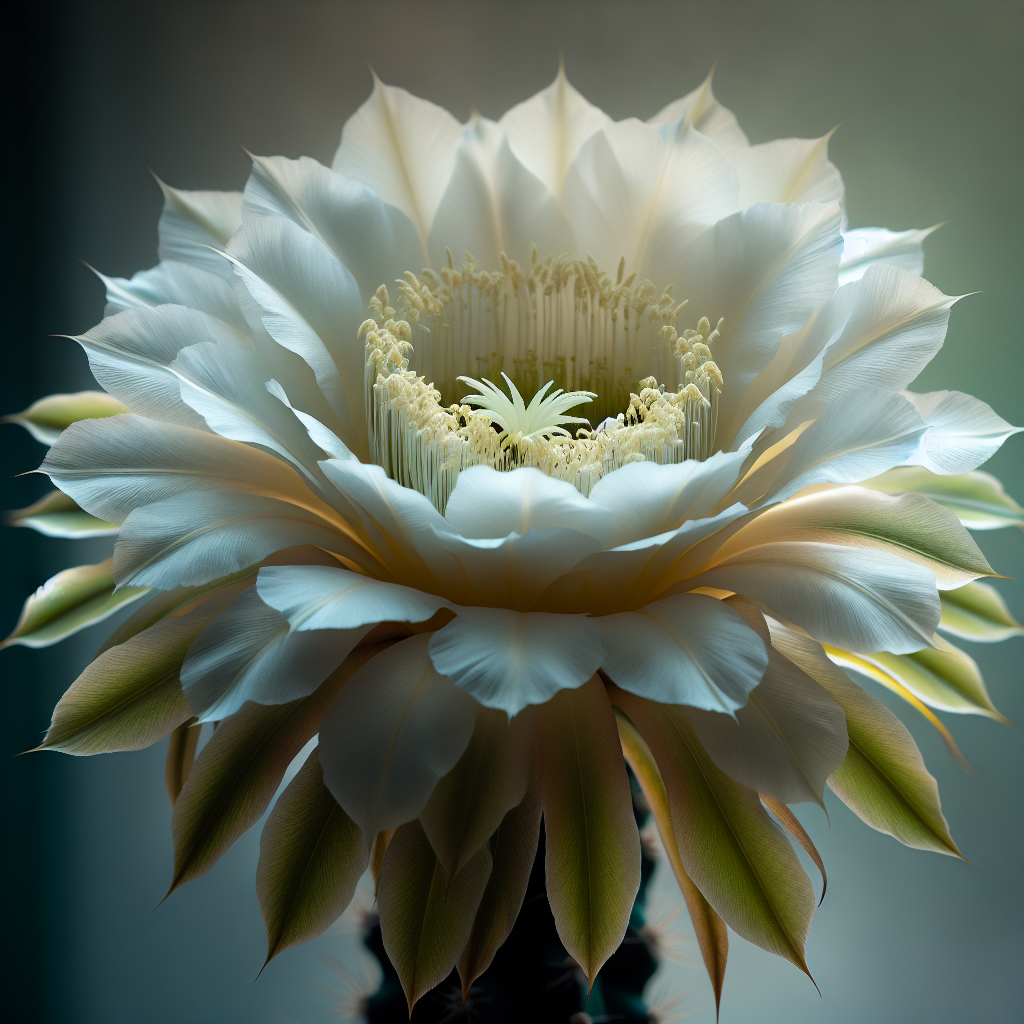Uncategorised
San pedro flower
The History and Symbolism of San Pedro Flower
The San Pedro flower, also known as the Trichocereus pachanoi, is a cactus species native to the Andes Mountains in South America. It is a sacred plant that has been used for centuries by indigenous cultures for its medicinal and spiritual properties. In this article, we will delve into the rich history and symbolism of the San Pedro flower.
The history of the San Pedro flower can be traced back to the Inca civilization, where it was considered a sacred plant and used in religious ceremonies. The Incas believed that the plant had healing powers and could connect them to the spiritual world. They would consume the cactus in a ceremonial ritual called “mesada,” which involved boiling the plant and drinking the liquid. This practice was believed to bring about visions and spiritual enlightenment.
The Spanish conquest of South America in the 16th century led to the suppression of indigenous cultures and their traditional practices. However, the use of the San Pedro flower persisted among the native people, who incorporated it into the Catholic religion. The plant was seen as a bridge between the physical and spiritual worlds, and its use was allowed by the Catholic Church.
In the 20th century, the San Pedro flower gained popularity among Westerners seeking spiritual experiences. It was introduced to the United States and Europe by travelers and explorers who had encountered the plant during their journeys to South America. The San Pedro flower became a part of the counterculture movement in the 1960s and 1970s, where it was used in psychedelic therapy and spiritual practices.
The San Pedro flower is not only steeped in history but also holds significant symbolism. In indigenous cultures, the cactus is seen as a symbol of life and fertility. Its ability to grow and thrive in harsh conditions is seen as a representation of resilience and strength. The plant is also associated with the concept of rebirth and transformation, as it sheds its spines and blooms beautiful white flowers.
In addition to its cultural symbolism, the San Pedro flower also has a deep spiritual meaning. It is believed to have the power to open the heart and mind, allowing individuals to connect with their inner selves and the universe. The plant is often used in shamanic ceremonies to facilitate spiritual journeys and healing. Its effects are said to be gentle and introspective, providing a sense of clarity and inner peace.
The San Pedro flower has also gained recognition in the scientific community for its medicinal properties. It contains a compound called mescaline, which has been found to have therapeutic effects on mental health conditions such as depression, anxiety, and PTSD. Studies have also shown that the plant has anti-inflammatory and antioxidant properties, making it a potential treatment for various physical ailments.
Despite its rich history and symbolism, the San Pedro flower is facing threats to its survival. The increasing popularity of the plant has led to overharvesting, and its natural habitat is being destroyed by urbanization and agriculture. Efforts are being made to protect and preserve the plant, including cultivation in botanical gardens and conservation projects.
In conclusion, the San Pedro flower is a plant with a fascinating history and deep symbolism. Its use in indigenous cultures for spiritual and medicinal purposes has stood the test of time and continues to be relevant in modern times. As we continue to learn more about this sacred plant, it is essential to also recognize the importance of preserving its natural habitat for future generations to experience its beauty and benefits.
Growing and Caring for San Pedro Flower: Tips and Tricks

San Pedro flower, also known as Trichocereus pachanoi, is a beautiful and unique cactus native to the Andes Mountains in South America. It is a popular plant among cactus enthusiasts due to its stunning white flowers and its ability to thrive in a variety of climates. If you are interested in growing and caring for this exotic plant, here are some tips and tricks to help you along the way.
First and foremost, it is important to understand the natural habitat of the San Pedro flower. This cactus is typically found in high altitudes, where it can receive plenty of sunlight and cool temperatures. Therefore, when growing it in your own garden, it is crucial to mimic these conditions as closely as possible. Choose a spot that receives full sun for at least six hours a day and has well-draining soil. If you live in a colder climate, it is best to grow San Pedro flower in a pot that can be brought indoors during the winter months.
When it comes to watering, San Pedro flower is a drought-tolerant plant that can survive long periods without water. However, it is important to water it regularly during the growing season, which is typically from spring to fall. Allow the soil to dry out completely between waterings, and be careful not to overwater as this can lead to root rot. During the winter months, reduce watering to once a month or less, as the plant goes into a dormant state.
Fertilizing is also an essential aspect of caring for San Pedro flower. This cactus is a heavy feeder and requires regular fertilization to thrive. Use a balanced fertilizer with equal parts nitrogen, phosphorus, and potassium, and apply it once a month during the growing season. Be sure to dilute the fertilizer to half strength to avoid burning the plant’s roots.
Pruning is not necessary for San Pedro flower, but it can help maintain its shape and promote healthy growth. If you notice any dead or damaged branches, it is best to remove them to prevent any potential diseases from spreading. Additionally, you can prune the top of the plant to encourage branching and create a fuller appearance. Just be sure to use clean and sharp pruning tools to avoid damaging the plant.
Pests and diseases are not a major concern for San Pedro flower, but it is still important to keep an eye out for any potential issues. Mealybugs and spider mites are the most common pests that can affect this cactus. If you notice any signs of infestation, such as white cottony patches or webbing, treat the plant with a natural insecticide or wipe the affected areas with rubbing alcohol. As for diseases, root rot can occur if the plant is overwatered, so be sure to follow proper watering practices to prevent this issue.
Propagation of San Pedro flower can be done through seeds or cuttings. If you choose to propagate through cuttings, be sure to let the cut end dry out for a few days before planting it in well-draining soil. Keep the soil moist but not wet, and the cutting should root within a few weeks. If you opt for seeds, be sure to use fresh ones and plant them in a well-draining cactus mix. Keep the soil moist and warm, and the seeds should germinate within a few weeks.
In conclusion, growing and caring for San Pedro flower requires mimicking its natural habitat, regular watering and fertilizing, occasional pruning, and keeping an eye out for pests and diseases. With proper care, this stunning cactus can thrive and bring beauty to any garden. So why not add a touch of the Andes Mountains to your own backyard with a San Pedro flower?
Exploring the Medicinal Uses of San Pedro Flower in Traditional Medicine
San Pedro flower, also known as Trichocereus pachanoi, is a cactus native to the Andean mountains of South America. It has been used for centuries by indigenous cultures for its medicinal properties and is still widely used in traditional medicine today. In this article, we will explore the various medicinal uses of San Pedro flower and its role in traditional medicine.
One of the most well-known uses of San Pedro flower is its ability to treat various physical ailments. The cactus contains a compound called mescaline, which has been found to have pain-relieving properties. In traditional medicine, San Pedro flower is often used to alleviate headaches, muscle pain, and joint pain. It is also believed to have anti-inflammatory properties, making it a popular remedy for conditions such as arthritis and rheumatism.
In addition to its physical benefits, San Pedro flower is also used for its mental and emotional healing properties. The mescaline compound has been found to have psychoactive effects, which can induce a state of relaxation and introspection. This makes it a valuable tool in treating mental health issues such as anxiety, depression, and PTSD. In traditional medicine, San Pedro flower is often used in shamanic ceremonies to help individuals connect with their inner selves and gain a deeper understanding of their emotions.
Furthermore, San Pedro flower is also believed to have spiritual healing properties. In traditional medicine, it is often used in spiritual rituals and ceremonies to promote spiritual growth and enlightenment. The mescaline compound is said to open the mind and expand consciousness, allowing individuals to gain a deeper understanding of themselves and the world around them. This spiritual aspect of San Pedro flower is highly valued by indigenous cultures and is still practiced today.
Aside from its medicinal and spiritual uses, San Pedro flower also has practical applications. The cactus is known for its ability to thrive in harsh environments and has been used by indigenous cultures as a source of food and water. The stems of the cactus can be boiled and eaten, providing a nutritious source of sustenance. The cactus also contains a high amount of water, making it a valuable source of hydration in arid regions.
In recent years, there has been a growing interest in the medicinal uses of San Pedro flower in Western cultures. The mescaline compound has been found to have potential in treating addiction, with some studies showing promising results in treating alcohol and nicotine addiction. It is also being studied for its potential in treating cluster headaches and chronic pain.
However, it is important to note that the use of San Pedro flower in traditional medicine is deeply rooted in cultural and spiritual beliefs. The cactus is often used in conjunction with other traditional healing practices, such as chanting, smudging, and energy work. It is not simply a matter of consuming the cactus for its medicinal properties, but rather a holistic approach to healing that encompasses the mind, body, and spirit.
In conclusion, San Pedro flower has a long history of use in traditional medicine for its physical, mental, emotional, and spiritual healing properties. Its role in traditional healing practices goes beyond its medicinal benefits and is deeply intertwined with cultural and spiritual beliefs. As Western cultures continue to explore the potential of San Pedro flower, it is important to respect and honor its traditional uses and the cultures that have been using it for centuries.

